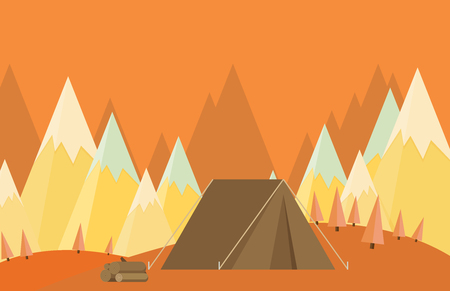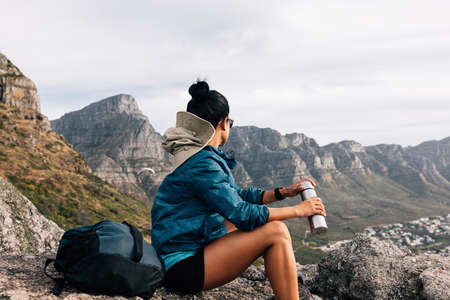Introduction to Sustainable Camping
When you think of the Isle of Skye and the Hebrides, images of rugged coastlines, misty moorlands, and ancient standing stones might come to mind. These Scottish gems are renowned for their wild beauty and delicate ecosystems. As more families and adventurers are drawn to these enchanting islands, it’s never been more important to consider how we camp. Sustainable camping is all about enjoying the outdoors while making sure that our presence leaves as little trace as possible. It means respecting local wildlife, preserving natural habitats, and being mindful of the impact we have on these precious places. By embracing sustainable camping practices, not only do we protect these unique landscapes for future generations, but we also deepen our connection to nature and each other. On Skye and throughout the Hebrides, every small effort counts towards keeping these magical places wild and wonderful—so let’s explore how we can tread lightly together.
Respecting Local Wildlife and Habitats
The Isle of Skye and the Hebrides are home to some of Scotland’s most remarkable wildlife and delicate habitats. As you set up camp in these beautiful places, it’s essential to observe and protect the local flora and fauna. By doing so, you help ensure these environments remain unspoilt for generations to come.
Observing Wildlife Responsibly
Whether you’re watching otters along the shoreline or spotting golden eagles overhead, always maintain a respectful distance from animals. Approaching too closely can cause stress or even lead them to abandon their young. Bring binoculars if you want a closer look, and move quietly to avoid disturbing any creatures you encounter.
Guidelines for Watching Wildlife
| Wildlife | Recommended Distance | Dos | Donts |
|---|---|---|---|
| Otters & Seals | At least 50 metres | Use binoculars; watch quietly | Avoid sudden movements or loud noises |
| Birds (e.g., Eagles) | At least 200 metres from nests | Stick to marked paths; use telephoto lens for photos | Never approach nesting sites directly |
| Deer & Livestock | Keep gates closed; observe from afar | Walk calmly on paths; respect farmland boundaries | Feed or attempt to touch animals |
Protecting Fragile Habitats
The unique landscapes of Skye and the Hebrides—ranging from machair grasslands to peat bogs—are sensitive to human impact. To help preserve these habitats, always follow marked trails and established footpaths. This reduces erosion, prevents trampling of rare plants, and minimises disturbance to ground-nesting birds.
Top Tips for Habitat Protection
- Stick to signposted routes and avoid creating new tracks.
- If walking with children, teach them about local flowers and why picking wild plants is discouraged.
- Set up camp at designated spots whenever possible, keeping away from water sources to protect aquatic life.
- Be mindful when collecting firewood—only use fallen branches and never strip bark or cut live trees.
A Family-Friendly Reminder
Caring for nature is something everyone can do—even the littlest adventurers! By leading by example and sharing gentle reminders with your family, you’ll help nurture a lifelong respect for the wild beauty of Scotland’s islands. Remember: leave only footprints, take only memories.

3. Leave No Trace: Rubbish and Waste
When camping in the breathtaking landscapes of the Isle of Skye and the Hebrides, it’s vital to remember that every footprint counts. Practising the “Leave No Trace” principle is not just about courtesy—it’s about caring for these wild places so that families like ours can enjoy them for generations to come. The golden rule? Always leave your campsite cleaner than you found it.
Best Practices for Managing Rubbish
Pack reusable containers and bags for your food and gear, and plan ahead by reducing packaging before you set off. Bring bin bags specifically for your rubbish and always take everything away with you, even if bins are provided nearby—these can quickly fill up or attract local wildlife like curious sheep or seabirds. If you spot litter left by others, why not make a game of picking it up as a family challenge? It’s a simple act that shows respect for both nature and fellow campers.
Responsible Human Waste Disposal
If facilities are available at campsites or car parks, use them. In remote areas, carry a small trowel and choose a spot at least 30 metres from water sources, footpaths, and buildings. Dig a shallow hole (about 15cm deep), cover waste with soil, and replace any turf carefully. Consider using biodegradable toilet paper or packing used tissue out with your rubbish. Teaching children these habits can be an empowering way to connect them to nature responsibly.
Recycling on the Isles
Many communities on Skye and the Hebrides have recycling points—check local guidance before your trip so you know what materials are accepted and where. Wash and separate recyclables as you would at home, and if in doubt, bring items back with you rather than risk contaminating local bins. By sorting waste thoughtfully, we support the islands’ efforts to stay clean and green.
With every crisp packet collected and each careful choice about waste, we’re showing our little ones how small actions make a big difference. Let’s leave these magical places even more beautiful than we found them—ready for another family adventure under Scotland’s wide, starry skies.
4. Choosing Your Campsite Responsibly
Camping on the Isle of Skye and the Hebrides is a magical experience, but it comes with the responsibility of protecting these treasured landscapes for future generations. When selecting your campsite, its essential to choose legal and low-impact locations that respect local regulations and the Scottish Outdoor Access Code. Here are some practical tips to guide you:
Understanding Local Rules and the Scottish Outdoor Access Code
The Scottish Outdoor Access Code gives everyone the right to access most land and inland water in Scotland, but it also sets out how to do so responsibly. Some areas, especially popular spots or fragile habitats, may have additional restrictions or byelaws in place—such as seasonal camping management zones.
What to Check |
Why It Matters |
|---|---|
| Is wild camping permitted in this area? | Some sites are protected or restricted due to conservation efforts or local byelaws. |
| Are there designated campsites nearby? | Using established sites helps minimise damage to sensitive habitats. |
| Is there clear access for leaving no trace (e.g. waste disposal)? | This ensures you can properly manage rubbish and avoid polluting the environment. |
| Are you at least 100m from roads and buildings? | This respects privacy for locals and keeps your impact discreet. |
Low-Impact Camping Locations: Tips for Families
- Pitch on durable ground: Choose grassy areas or hard ground, avoiding boggy terrain, dunes, or delicate mosses.
- Avoid overcrowded spots: If you arrive somewhere already busy, move on to prevent overuse of any one location.
- Stay for short periods: The Code recommends only one or two nights in one spot to reduce wear on the land.
- Keep away from livestock and crops: This protects farmers’ livelihoods and reduces disturbance to animals.
- Look for existing clearings or previously-used pitches: This avoids creating new scars on the landscape.
Family-Friendly Advice: Keeping Everyone Safe and Happy
If youre camping with children, involve them in choosing a suitable site by looking for flat ground away from hazards like rivers or steep slopes. Make sure everyone knows about respecting wildlife and how to follow leave-no-trace principles. Setting a good example now helps children grow into responsible outdoor explorers themselves!
5. Sustainable Campfires and Cooking
When camping on the Isle of Skye and the Hebrides, making eco-friendly choices about campfires and cooking is essential for preserving these beautiful landscapes for generations to come. Fires can cause lasting damage to delicate peatlands and grass, so it’s best to avoid open campfires whenever possible.
Minimising Fire Damage
If you feel a fire is necessary, only build one in designated fire pits or areas where previous fires have already been made. Always keep your fire small and controlled, using locally sourced wood rather than stripping branches from living trees. Never light a fire during dry spells or when there are local fire bans in place, as wildfires can spread quickly in the island winds.
Portable Stoves: A Greener Alternative
Opt for portable stoves or gas burners—they’re much safer and leave no trace behind. These are lightweight, easy to use, and widely accepted by locals as the responsible choice. Remember to set up your stove on stable ground away from tents and flammable materials.
Reducing Waste While Cooking
Cooking outdoors doesn’t have to mean lots of rubbish. Bring reusable containers, cutlery, and plates instead of single-use plastics. Choose ingredients with minimal packaging or buy from local shops using your own bags and containers. Compost food scraps where facilities allow, and always pack out everything you brought with you—leave your campsite cleaner than you found it!
Respecting Local Rules and Nature
Check for signage about fire bans or local restrictions before setting up camp or cooking. If in doubt, ask a landowner or ranger for advice—people here are friendly and appreciate visitors who care for their surroundings. By following these simple steps, families can enjoy delicious meals together outdoors while protecting the wild beauty of Skye and the Hebrides.
6. Supporting Local Communities
One of the most rewarding aspects of sustainable camping on the Isle of Skye and the Hebrides is the opportunity to support local communities. These islands are home to vibrant cultures, unique traditions, and small businesses that rely on respectful visitors for their livelihood. By consciously choosing how and where you spend your money and time, you can make a real difference.
Shop with Independent Businesses
When stocking up on supplies or searching for memorable souvenirs, opt for independent shops, local markets, and family-run cafes rather than large chains. Not only does this boost the island economy, but it also helps preserve the character of these special places. Whether you’re picking up fresh baked goods from a village bakery or handmade crafts from a local artisan, every purchase is an investment in the community’s future.
Respect Cultural Traditions
The Isle of Skye and the Hebrides are steeped in Gaelic heritage and customs that are still cherished today. Take time to learn about local festivals, music, and language – perhaps even greet someone with a friendly “Halò!” (hello in Gaelic). Showing interest and respect for these traditions strengthens the bond between visitors and residents, creating positive experiences for all.
Be Mindful of Private Land
While Scotland’s right-to-roam laws allow access to much of the countryside, it’s important to always seek permission before entering private land or setting up camp near homes and farms. Respect signage and boundaries, close gates behind you, and avoid disturbing livestock or crops. These simple acts show appreciation for those who live and work on the islands.
By making thoughtful choices during your stay—shopping locally, engaging respectfully with island culture, and honouring private spaces—you help ensure that these magical destinations continue to thrive for generations to come.
7. Enjoying the Experience with Minimal Impact
Camping as a family on the Isle of Skye or in the Hebrides is a chance to create treasured memories together, all while respecting these remarkable wild places. With a mindful approach, every moment becomes both an adventure and an opportunity to teach our little ones about caring for nature. Gather around your campfire (where allowed), share stories beneath the endless Scottish sky, and listen for owls or watch the gentle waves lap the shore—these are moments that will be cherished by all generations.
Building Lasting Memories
Children remember when we show them how to tread softly: picking up litter, leaving wildflowers untouched, and greeting fellow walkers with a friendly “hello.” Encourage your children to keep a nature diary, sketching their favourite scenes or writing about the wildlife they spot. These simple activities help anchor the beauty of Skye and the Hebrides in their hearts, making your trip even more meaningful.
Passing Down Respect for Nature
Your example sets the tone for future explorers. By packing out what you bring in and choosing sustainable camping practices, you help ensure that these islands remain unspoilt for years to come. Share local legends and stories of island life, connecting your family not just to the landscape but also to its rich cultural tapestry. When little hands plant wildflower seeds or help refill reusable water bottles, they’re learning small acts that add up to big change.
Ensuring Wild Beauty Endures
Each careful step you take preserves Skye and the Hebrides’ magic for future families. Leave each site as you found it—or better—so that others can experience the same sense of wonder. With laughter echoing across moor and glen, your family can enjoy all that these islands offer without leaving a heavy footprint behind.
By embracing sustainable camping together, you’re not only building joyful family traditions but also becoming stewards of Scotland’s natural heritage. The wild beauty of Skye and the Hebrides will continue to inspire awe—now, and for generations yet to come.


